General Characteristics
- SYNAPSID = Group including mammals and every animal mo
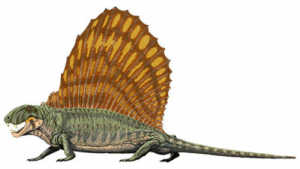
Figure 1: Dimetrodon – a synapsid commonly mistaken for a dinosaur re closely related to mammals than other amniotes.
- Larger skull relative to body size (accommodates larger brain).
- Hair and mammary glands.
- Endothermic
- Highest level of infant care, because the young are fed by means of the mammary glands
- Three ear bones two of which are derived from jaw bones.
- Diverged from a common ancestor ~215 million years ago.
Major Evolutionary Advancement #1 – Hair
- Hair = (dead keratin).
- All mammals, at one stage of their life cycle, have hair, and only mamm
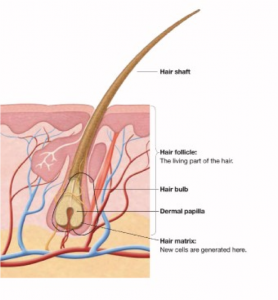
Figure 2: Hair structure als have true hair.
- Hair grows out of pits in skin called follicles.
- Muscles can erect hair for signaling (extends touch beyond skin) or for thermoregulation.
- Thick coat of body hair = fur
- Basically, provides warmth, protection, camouflage, signaling
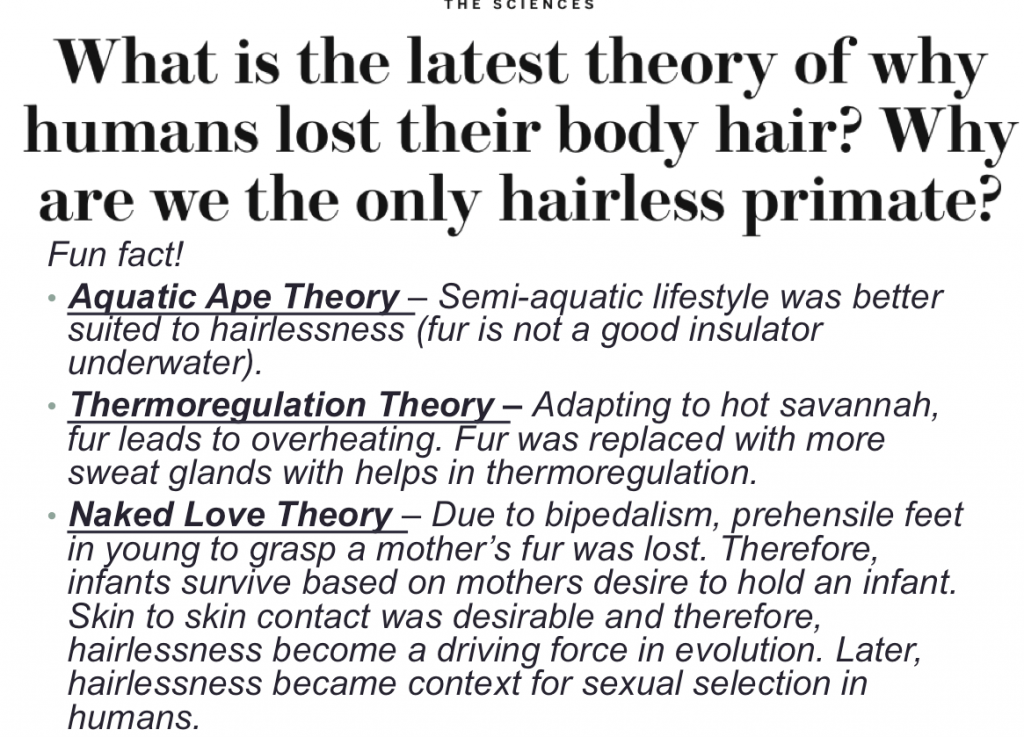
Major Evolutionary Advancement #2 – Mammary Glands
- Milk production – a substance rich in fats and proteins for young
- Mammary glands likely evolved from sweat glands.
- Lactation = excretion of milk from mammary glands
- Both sexes typically have mammary glands, but development typically stops for males during puberty.
- Beneficial due to nutritional and anti-microbial properties (survival rate of offspring increased)
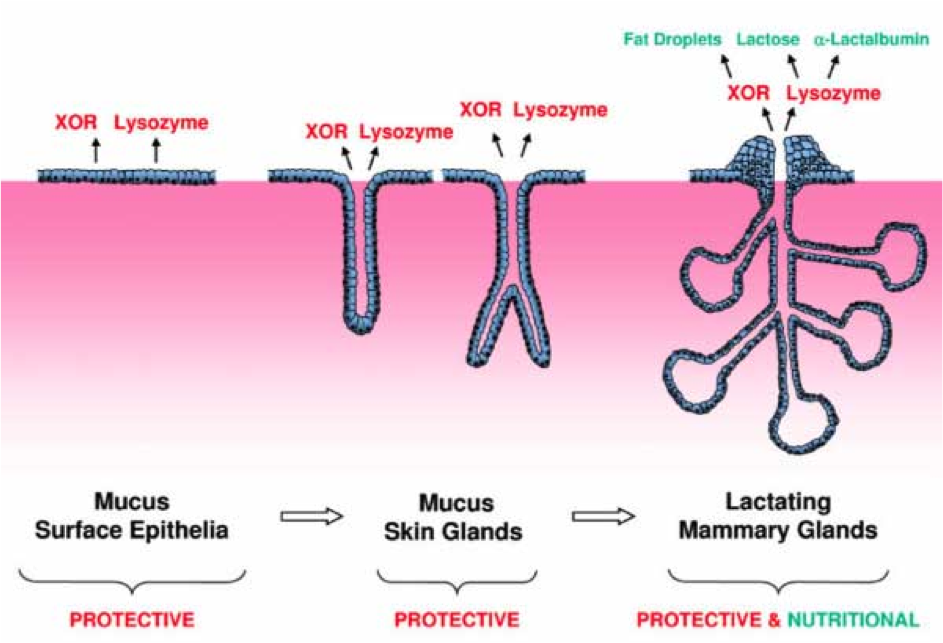
Major Evolutionary Advancement #3 – Endothermy
- Evolved in two separate lineages (Synapsids and Aves)!
- Mammals can shiver (involuntary muscle contractions) to generate heat in cold climates.
- Humans can sweat through glands to cool down as well.
General Anatomy
Covered already
- Fur and mammary glands
- Differentiated teeth based on diet
- Three ear bones
- Claws or nails
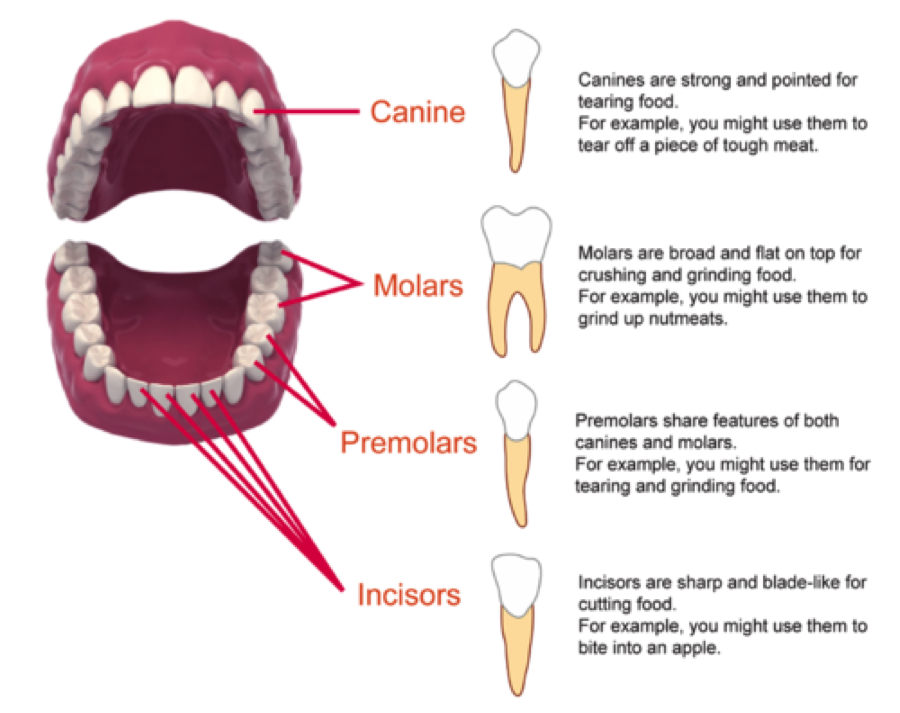
Physiology – Digestive System
- Extremely differentiated and varied.
- No cloaca (Monotremes are an exception) – separate openings for reproductive, urinary, and digestive tract.
-
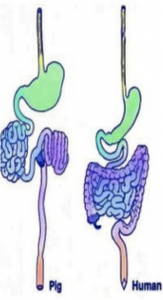
Figure 5: Mammalian digestive systems Salivary glands, J-Shaped stomach with sphincters preventing backflow, long intestine (in humans ~6 m of small intestine!)
- Mammals lack the ability to breakdown cellulose – a plant material.
- Grazing herbivores have rumen – specialized chamber in digestive tract which contains bacteria that help breakdown celluose (Cows regurgitate the partially digested food from the rumen and chew it again and repeat – “chewing their cud”)
Fun fact:
- Many mammals have a cecum in their digestive tract, which has a similar function to the rumen. The ancestors of modern humans had this – today it has been reduced and is vestigial (not useful) due to dietary change in modern humans. Along with this, wisdom teeth are vestigial as well – they were used for grinding down plant matter.
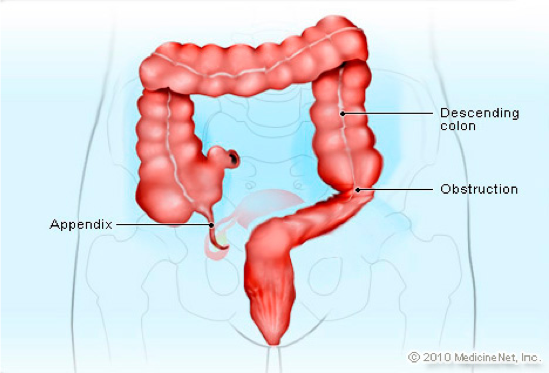
Question: These two features aided in the digestion of cellulose, however in modern humans these are considered vestigial – what does that tell you about changes in human diet?
Physiology – Circulatory System
- Four chambered heart with double loop circulation
- Complete separation of deoxygenated/oxygenated blood
The RIGHT side receives venous blood (from veins) from the body and pumps it to the lungs for oxygenation.
The LEFT side receives oxygenated blood from the lungs and pumps it to the body.
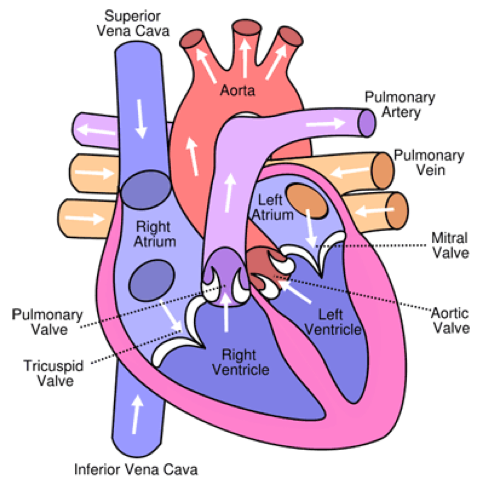
Physiology – Respiratory system
- ALL MAMMALS USE LUNGS.
- Powered by two sets of muscles: chest muscles pull air in and push air out by moving the ribs up or down to change the chest cavity size.
- Diaphragm – large muscle that extends across the bottom of the chest cavity.
- Diaphragm contracts – bottom of cavity is pulled down, chest cavity increases, air rushes in to fill the cavity (Inhaling)
- Diaphragm relaxes – chest cavity returns to regular size, pushing air out (exhaling)
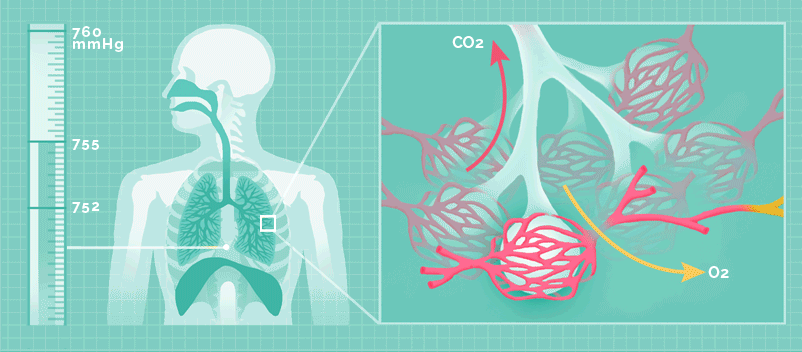
Physiology – Reproduction
- Highest level of parental/offspring care
- Nourish offspring through mammary glands
- These two traits in particular allow for high offspring survival rate and allocation of energy into nervous system/brain development.
- Mating, behaviors, strategies are extremely varied across class mammalia, but there are typical dominance hierarchys – social interactions that create a ranking system for mating.
Mammals are divided into three subclasses based on how they reproduce:
- Monotremes
- Marsupials
- Placental mammals
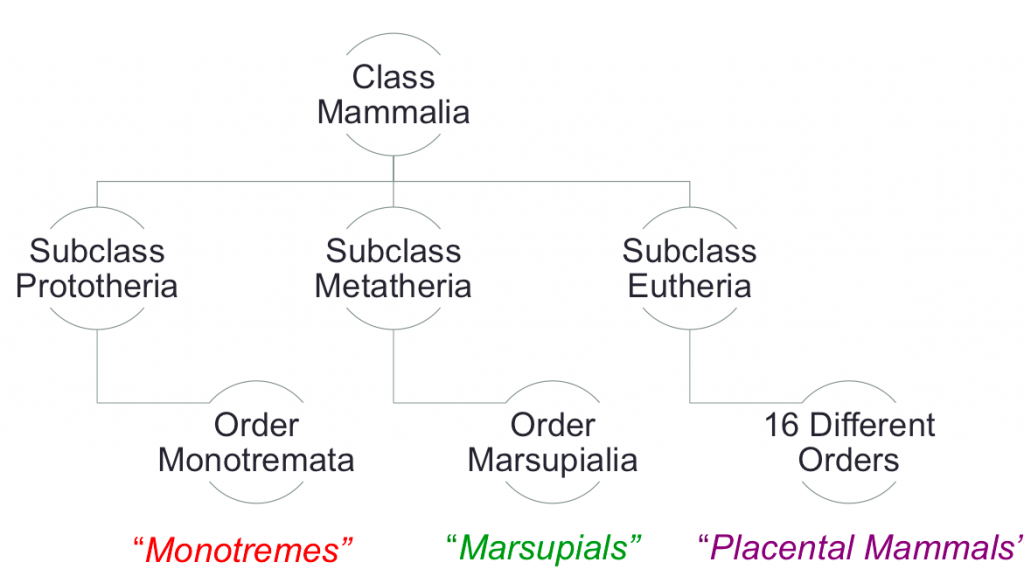
Order Monotremata (Monotremes)
- The duck billed platypus and the spiny anteater (echidna) of Australia are the only two living monotremes.
- Oviparous with internal fertilization (lays hard-shelled amniotic egg)
- Have a cloaca
- Male Echinda have four-headed penises that are stored inside the cloaca – this is yet another link to reptilian evolution (remember the double hemipenes in reptiles?)
- Interestingly, the platypus lacks a true stomach and digests its food in an enlarged area of the esophagus.
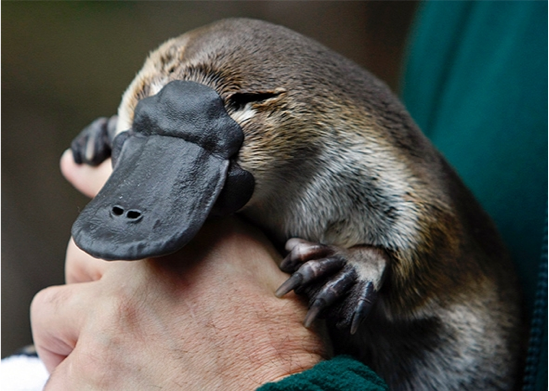
Figure 10: The duck-billed platypus – one of the few remaining monotremes
Order Marsupialia (Marsupials)
- Marsupials are found mainly in Australia, but some marsupials are found in South and Central America as well – the opossum is found in North America as far north as Hornby Island.
- In Australia, marsupials have filled many of the niches held by placental mammals in the rest of the world.
- Gestation – Development over time in regards to offspring being carried in the womb (before birth)
- Marsupials spend comparatively less time with gestation and they are born very immature. Once born they enter a pouch on the mother. Fed by the mammary glands the newborn will remain in the pouch until mature.
- Internal Fert. Viviparous – underdeveloped compared to placental mammals.
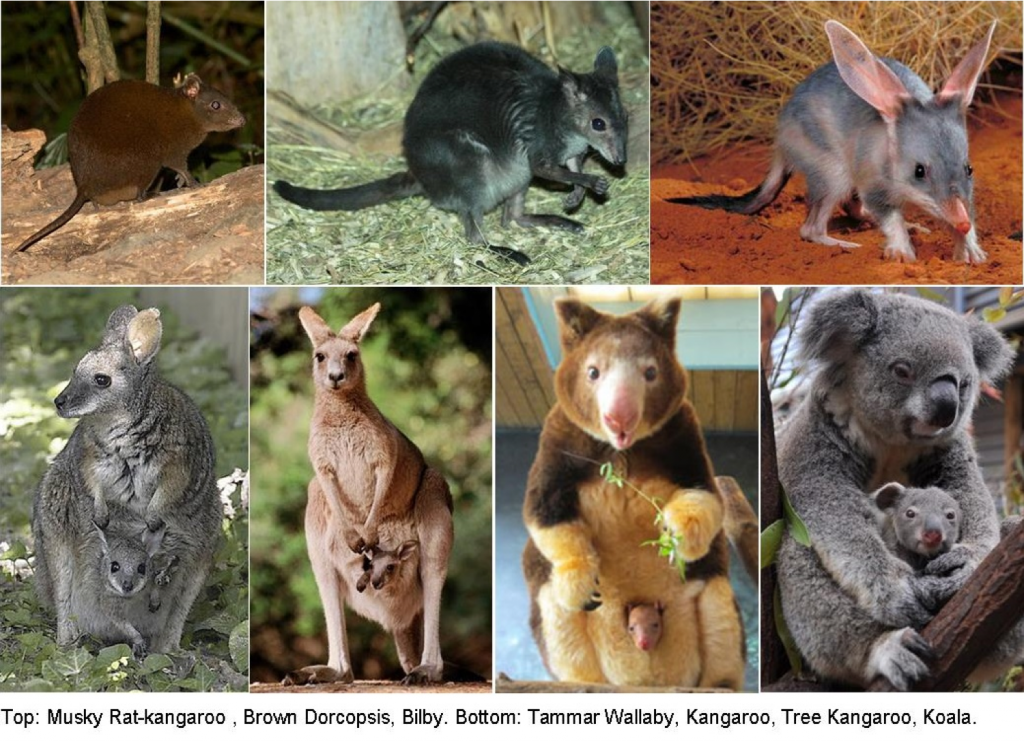
Placental Mammals
- Placenta – an organ that assists in exchange of nutrients from the mother to the developing offspring.
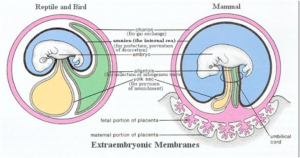
The placenta is modified from an amniotic egg.
- Due to the presence of the placenta, a longer gestation is possible. Longer gestation time = more energy used for development of brain/nervous system. As a result of this development, placental mammals have the largest brain to body weight ratio.
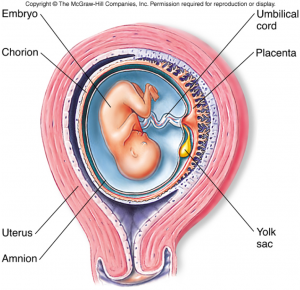
- Internal fertilization, viviparous after longer gestation.
- Even after the lengthy pregnancy brain development continues under parental care.
- The larger brain has resulted in social development and communication in many mammals.
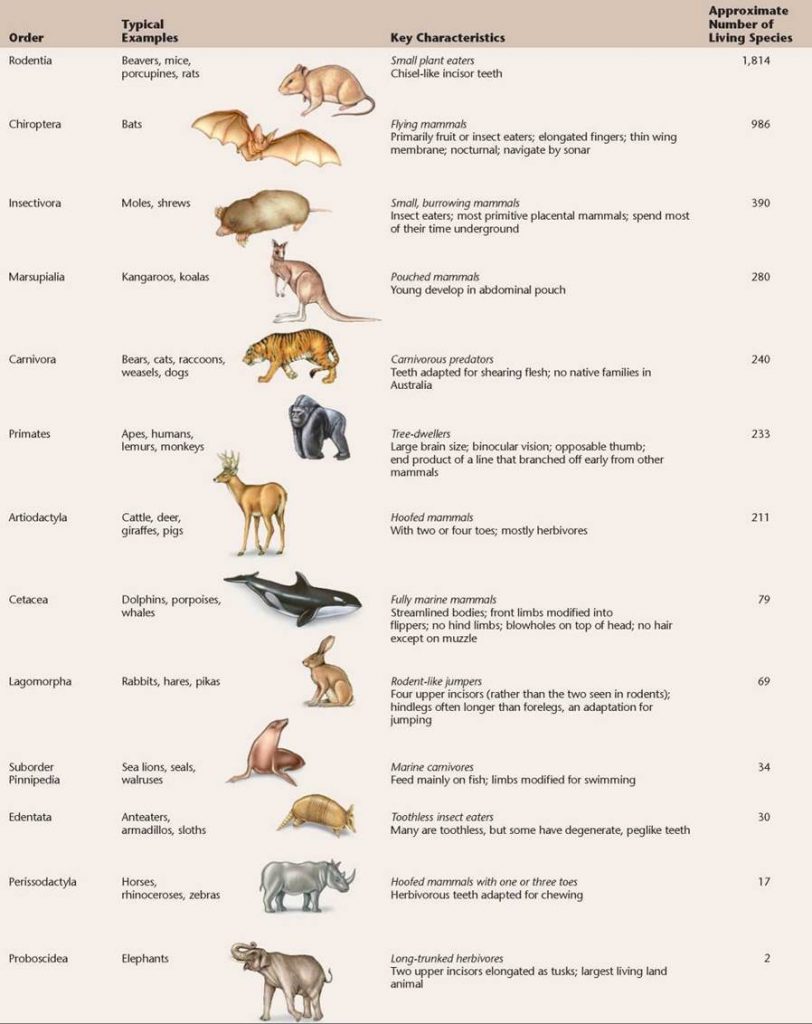
Fun fact – Evolution of Human Birth
Comments by shaun pletsch